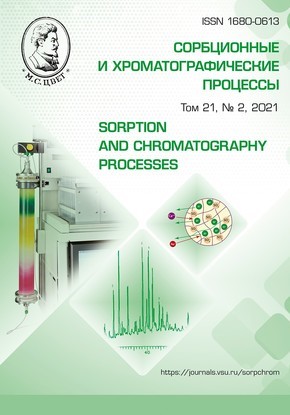The investigation of the parameters of the catalytic action of glucose-6-phosphate dehydrogenase isolated by chromatographic methods in liver pathology
Abstract
The aim of the study was the investigation of the activity of the key enzyme of the pentose phosphate pathway – glucose-6-phosphate dehydrogenase (G6PDH, EC 1.1.1.49) in liver pathology, as well as the isolation of the enzyme using chromatographic methods and the study of its catalytic properties. The analysis of G6PDH activity was carried out in the blood serum of patients with alcoholic hepatitis undergoing treatment in a hospital. The control group included effectively healthy donors with normal indicators of general and biochemical blood tests. Experimental toxic hepatitis (ETH) was induced by the oral administration of CCl4 to male white Wistar rats (Rattus norvegicus). The activity of G6PDH was determined spectrophotometrically at a wavelength of 340 nm. Purification of the enzyme from the liver of laboratory animals was carried out using fractionation with ammonium sulphate, gel filtration through Sephadex G-25 and G-150, and ion exchange chromatography through DEAE-cellulose. The purity of the obtained enzyme preparations was assessed using polyacrylamide gel electrophoresis. The total amount of protein in the samples was determined by the Lowry method.
It was revealed that along with a significant increase in the marker indicators of liver pathology - aspartate aminotransferase (ASAT) and alanine aminotransferase (ALAT), the activity of G6PDH also changed at toxic hepatitis in patients and in experiments on animals compared with the control groups. The use of chromatographic methods for the purification of G6PDH from the liver of rats under normal conditions and during ETH allowed obtaining enzyme preparations with specific activity 4.13 and 6.53 U/mg protein; with yields of 8.2 and 8.3%, respectively, which were used for investigation of the kinetic properties. It was determined that the kinetics of the enzymatic reaction catalysed by G6PDH obeys the Michaelis-Menten equation. During ETH, an increase in the rate of the enzymatic reaction, accompanied by an increase in the affinity for the substrate and coenzyme was observed. The inhibition constants and the type of inhibition were determined for ATP, ADP, and NADPH G6PDH from rat livers under normal conditions and during ETH. The obtained results suggest that changes in G6PDH activity during toxic hepatitis were associated with conformational rearrangements of the protein molecule without changing its primary structure against the background of intensification of free radical processes.
Downloads
References
Iimuro Y., Bradford B.U., Yamashina S., Rusyn I., Nakagami M. et al., Hepatology, 2000, Vol. 31, pp. 391-398. 10.1002/hep.510310219
Andreeshcheva E.M., Popova T.N., Artyukhov V.G., Matasova L.V., Bulletin of experimental biology and medicine, 2004, No 4, pp. 399-402.
Betke K., Brewer G.J., Kirkman H.N., Tech. Rep. Ser., 1967, Vol. 366, pp. 30-32.
Kochetov G.A., Prakticheskoe rukovodstvo po enzimologii, M., Vysshaya shkola, 1980, 272 p.
Davis B.J., Jones R.G., Farmer G.R., Ann. N. Y. Acad. Sci., 1964, Vol. 121, pp. 404-427. DOI: 10.1111/j.1749-6632.1964.tb14213.x
Shevchenko A., Wilm H., Vorm O., Anal. Chem., 1996, Vol. 68, pp. 850-858. DOI: 10.1021/ac950914h
Lowry О.Н., Rosebrough N.J., Farr A.L., Randall R.J., J. Biol. Chem., 1951, Vol. 193, pp. 265-275.
Glants S., Mediko-biologicheskaya statistika, Moskow, Praktika, 1999, 459 с.
Gong Z., Tian G.L., Huang Q.W., Wang Y.M., Xu H.P., BMC pediatrics, 2017, Vol. 17, No 172, pp. 1-6. DOI: 10.1186/s12887-017-0920-y
Askar M.A., Sumathy K., Baquer N.Z., Indian journal of biochemistry & bio-physics, 1996, Vol. 33, No 6, pp. 512-518.
Velasco P. Barcia R., Ibarguren I., Sieiro A. M. et al., The International journal of biochemistry, 1994, Vol. 26, No 2, pp. 195-200. DOI: 10.1016/0020-711x(94)90145-7
Levy H.R. Vought V.E., Yin X., Ad-ams M.J., Archives of biochemistry and bio-physics, 1996, Vol. 326, No 1, pp. 145-151. DOI: 10.1006/abbi.1996.0058
Semenikhina A.V., Popova T.N., Matasova L.V., Biochemistry, 1999, Vol. 64, No 8, pp. 863-866.







